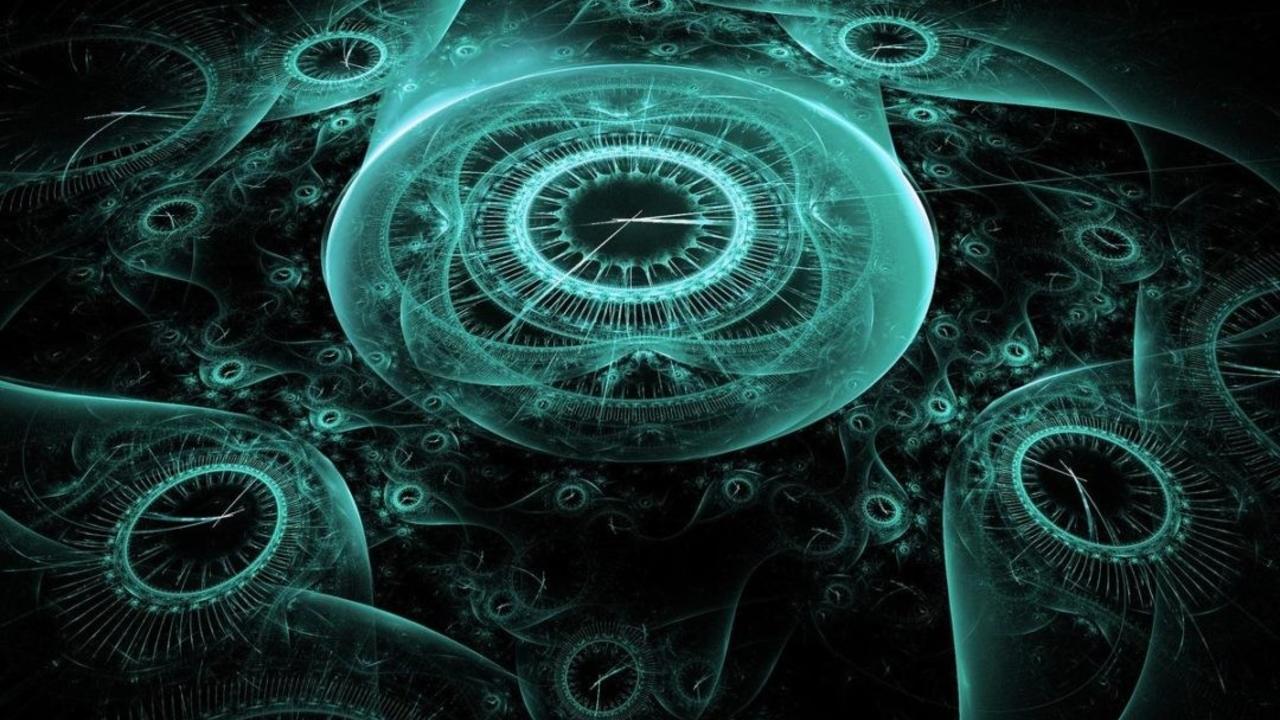Science News
& Faculty Articles
Missing Molecule Finally Discovered

by Dr. Amira Val Baker, Resonance Science Foundation Astrophysicist
The evolution from the first molecule to the complex chemistry that exists in our universe today is now one step closer to being understood.
When we think of complex chemistry, we usually think of all the matter that exists on our planet which in our atmosphere is a massive 10 trillion trillion molecules per cubic meter. As we move away from our planet this drops exponentially. However, surprising as it may be, space space – like the interstellar and intergalactic regions – are host to a myriad of molecules. Albeit not at quite the same high densities.
How these molecules formed and became the complex chemistry that we see today remains to be fully understood. It is currently agreed that the early universe consisted of only a few kinds of atoms and it wasn’t until the age of 100,000 years that hydrogen and helium combined to form the first molecule – helium hydride. However, although...
Origins of Quantumbiology – What is Life?

By Dr. Johanna Deinert, MD, RSF Research Scientist
By the end of 2018 the Royal Society has published a review into the emergence of Quantumbiology as a field of scientific interest. Today, we still need to understand life in the context of its physical environment. Despite the impression this field was new, it emerged in synchronicity with the interpretation of Quantum Physics in the early 20th century – about 90 years ago.
Erwin Schrödinger was not the first to discuss the field of Quantumbiology in his famous 1944 book „What is life?”. Shortly after the mathematical framework of Quantum Mechanics was established in 1927, the field of biophysics and biochemistry flourished. The Organicists sought the middle ground between opposing mechanistic and vitalistic worldviews. Founder of the interdisciplinary field of General System Theory Ludwig von Bertalanffy was one of the early pioneers into the explanation of life. As early as 1928 he discusses a...
Potential Habitability of Exoplanets

by William Brown, Resonance Science Foundation Research Scientist
featured image credit: Jack O’Malley-James/Cornell University: The intense radiation environments around nearby M stars could favor habitable worlds resembling younger versions of Earth.
A primary prediction of the USN model as presented in the Unified Spacememory Network publication by physicist Nassim Haramein, astrophysicist Amira Val Baker, and biologist William Brown is that the prebiotic chemistry that generates organic compounds and even complex biomolecules is occurring in nebulae throughout galaxies—a postulation that is termed universal biogenesis. Under this model, the precursors to cellular biology are abundant throughout the galactic medium, and therefore there is a very high likelihood that wherever conditions are hospitable to organisms, life will take hold there.
Considering the implications of universal biogenesis, it was very exciting when an Earth-like planet was discovered within...
Inner Clocks and Future Prediction

Article by Dr.
Researchers from University of California – Berkeley found two clocks in our brains with different functions. The paper authored by Assaf Breska and Richard B. Ivry from the Departement of Psychology was published lately in PNAS. There are different locations in the reptilian parts of our brain (the brainstem) where we process present and anticipative time. As well as our sense of orientation in space of the body, our orientation in time is processed by the cerebellum. The anticipatory part is processed in the basal ganglia, meaning the most advanced system of the reptilian brain and the connection to the higher operative systems of the grey matter. One of these basal ganglia is the Thalamus, referred to as “the gate to consciousness” by medical textbooks. It is as well the generator of the brainwave frequencies, hence our conscious activity...
Life in Deep Earth Totals 15 to 23 Billion Tonnes of Carbon - Hundreds of Times More Than Humans

Article by William Brown, Resonance Science Foundation Research Scientist
Barely living “zombie” bacteria and other forms of life constitute an immense amount of carbon deep within Earth’s subsurface—245 to 385 times greater than the carbon mass of all humans on the surface, according to scientists nearing the end of a 10-year international collaboration to reveal Earth’s innermost secrets.
By: Terry Collins & Katie Pratt; Deep Carbon Observatory
Deep Carbon Observatory collaborators, exploring the ‘Galapagos of the deep,’ add to what’s known, unknown, and unknowable about Earth’s most pristine ecosystem
Bacteria, archaea, and other microbes—some of them zombies—exist even in deepest known subsurface, and they’re weirder than their surface counterparts
~70% of Earth’s bacteria and archaea live underground
Earth’s deep life suggests microbes might inhabit the subsurface of other planets
...A Nanophotonic Structure Used to Entangle Photosynthetic Bacteria

Article by William Brown, Resonance Science Foundation Research Biophysicist
There is an obvious flaw in the current predominant physics model of the fundamental behavior and nature of the universe: current physics theory is a contentious amalgamation of two separate models that seem to be incompatible in characterizing a couple of important properties, like gravity and time. One of the greatest challenges to unifying the description of the microscale, described by quantum physics, with the macroscale, described by Einsteinian mechanics—is delineating the transition between what is considered non-classical, or quantum behavior, and classical behavior that seems characteristic of the macroscale. If “stuff” behaves differently when it is at molecular scales and below, then two different models are needed to describe the “stuff” that comprises the universe; one for the microscopic scale and the other for the macroscopic.
An interesting turn of events...
Music for the Heart

By Dr.
A recent publication indicates Yoga-Music at bedtime enhances the hearts variability in beat to beat distances. The heart is not only pumping, but pulsing with fractal fluctuations. The more flexible it is, the healthier you are. The pace will increase while breathing in and slow down during exhalation. The breath is giving a feedback to the nervous centers in the most archaic parts of the brainstem, the elongated spinal cord in the neck. It is responsible for the basic functions controlled by the unconscious nervous system. The variability of the heart can be entrained by coherent breathing techniques to a coherent beat-to-beat wave function or even a circular Poincaré-Plot. This state is called cardiac coherence and entrains the brain in its quite long refraction time of the pacemaker cells inside the “Gate to Consciousness” (Thalamus), which is why breathing techniques are used as a...
Electromics – The Double-Aspect of Life

Article by
Biologist Dr. Daniel Fels recently published an essay in Biology on the interaction of matter and the so-called bioelectricity as a functional unity for regulation of living cells. The editor of the scientific textbook “Fields of the Cell” summarizes evidence of bioelectricity. He discusses interactions of internal bioelectricity with internal biochemical structures, as well as the sensitivity of Biosystems to external physical factors.
Fels explains “bioelectricity is generated by electrical charges of ions and molecules in an aqueous environment. Ions and oscillations of charged molecules as well as chemical reactions lead to electrical currents and electrostatic and electrodynamic fields.” This is very basic in biological systems and differs from the bio-photon discussion. Every heartbeat, nervous excitation or muscle contraction is physiologically...
Bioreactor Device Helps Frogs Regenerate Their Legs

Article by William Brown, Biophysicist, Resonance Science Foundation Research Scientist
A team of scientists designed a device that can induce partial hindlimb regeneration in adult aquatic African clawed frogs (Xenopus laevis) by “kick-starting” tissue repair at the amputation site. Their findings, appearing November 6 in the journal Cell Reports, introduce a new model for testing “electroceuticals,” or cell-stimulating therapies.
“At best, adult frogs normally grow back only a featureless, thin, cartilaginous spike,” says senior author Michael Levin, developmental biologist at the Allen Discovery Center at Tufts University. “Our procedure induced a regenerative response they normally never have, which resulted in bigger, more structured appendages. The bioreactor device triggered very complex downstream outcomes that bioengineers cannot yet micromanage directly.”
The scientists 3-D printed the bioreactor...
Waterconference 2018

By Johanna Deinert, Resonance Science Foundation Research Scientist
Chairman Dr. Gerald Pollack from University of Washington, Seattle, opened the lectures by presenting Nobel Laureate Prof. Luc Montagnier. Co-founder of the World Foundation for Medical Research and Prevention. He introduced a highly sensitive method for detecting infections like Lyme, when usual Lab tests like serology and classical PCR (Polymerase chain reaction) fail. QuanticPCR uses the unique properties of water to store or even amplify specific pathogen-derived frequencies and is proving experimental evidence for the homeopathic principle of diluting without dilution of the contained information. The mechanism how PCR exactly works is commonly known to be not well understood. Giuseppe Vitiello presented a way to describe the bio-chemical reaction and its basics in physical terms.
We have recently posted news about the vaporization of water droplets and their unique shapes. In these kinds of...



